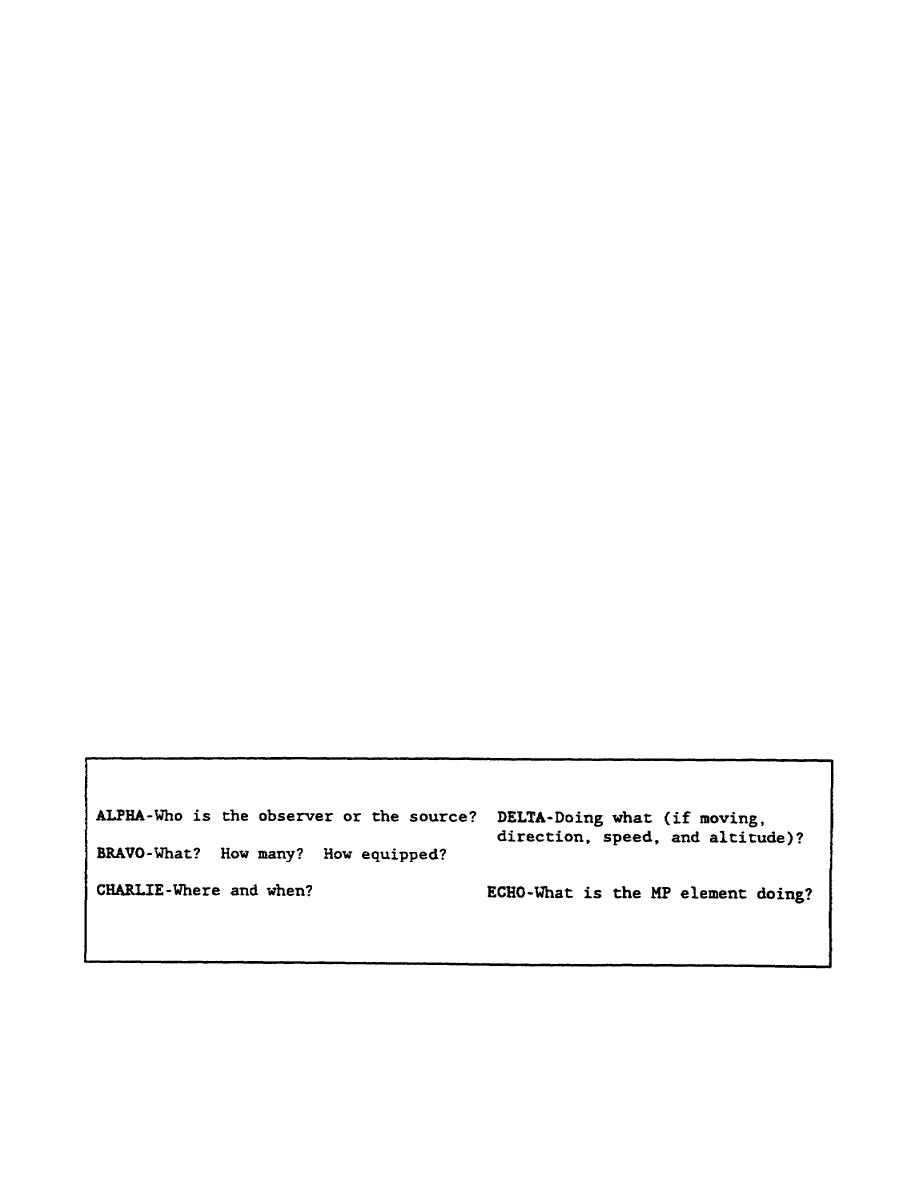
corrective action.
When immediate corrective action cannot be taken, the
team leader records the key information about the incident and notifies his
squad leader or other appropriate authority. The team leader must exercise
mature judgment. Vehicular flow interruption should be held to the absolute
minimum.
b. Straggler and Refugee Control
Plans must be made to handle both refugees and stragglers. During
conventional warfare or in a nuclear environment, this can become a severe
problem.
This is because mass movements, particularly of refugees, will
take place on the natural lines of drift. One of the most common lines of
drift are the major highways. Masses of refugees tend to obstruct the flow
of traffic, which increases the importance of the TCPs mission to keep the
MSR open.
At TCPs, MP control stragglers and refugees.
TCPs help military
personnel who have become separated from their units to return to their
units. If the personnel cannot be reunited with their units, MP direct them
to a straggler collecting point.
If they are injured, MP place them in
medical channels. The team makes sure that refugee traffic does not delay
authorized military traffic. The team does this by redirecting the refugees
to a new route, or by temporarily halting them until the MSR is open.
Refugees must not be allowed to hinder the flow of military traffic.
c. Intelligence Gathering and Reporting
The MP must be aware of the importance of gathering intelligence and
passing his observations through the chain of command.
All unusual
occurrences, including the activities of local inhabitants, should be
observed and reported.
The team watches for activity by guerrillas,
conventional enemy forces, and enemy aircraft.
Drivers using the MSR may
stop at the TCP to report suspected or actual enemy activity along the MSR.
The team relays spot reports (SPOTREP) of enemy sightings or activity.
A
sample SPOTREP is shown in Figure 1-8.
Figure 1-8.
SPOTREP for Enemy Information.
MP1029
1-22



 Previous Page
Previous Page
